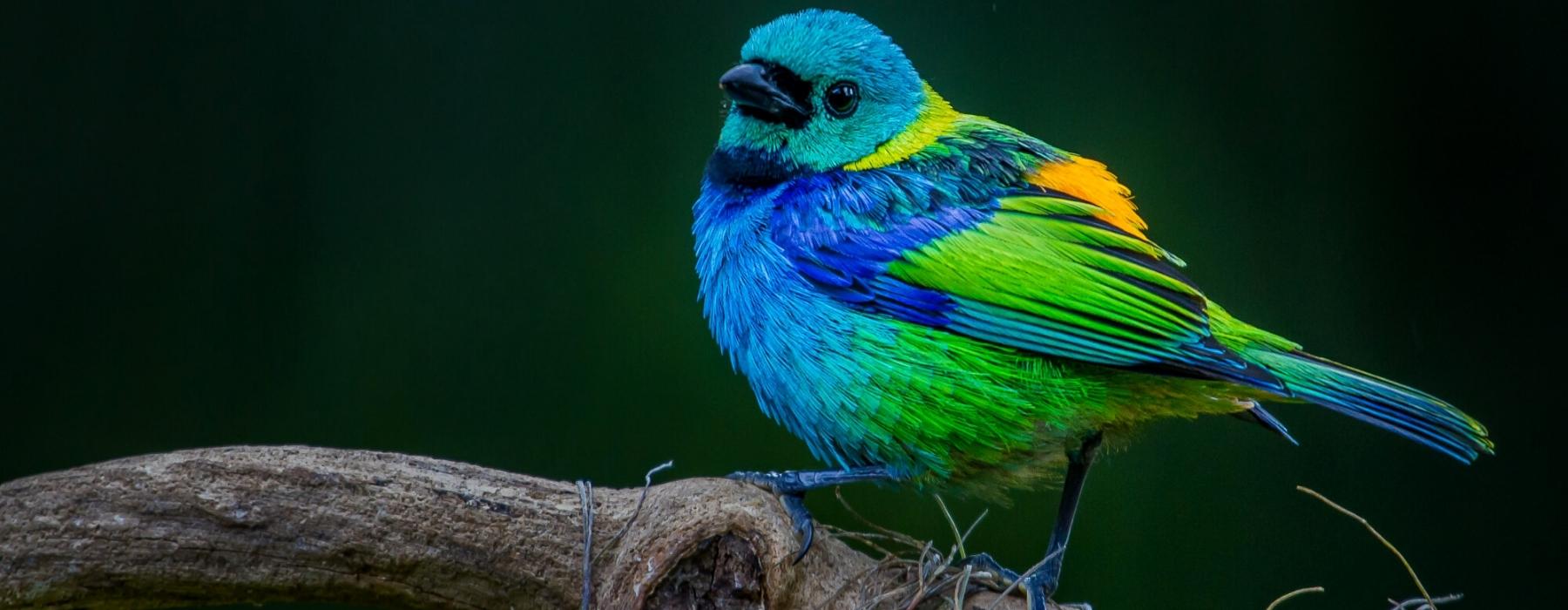
Birds of Manu Jungle , with new species being discovered every year. The megafauna predators often get the most attention, but Manu Amazon Rainforest birds are worthy of the trip alone. These aren’t your everyday sights for birdwatchers, no. The Amazon is a bucket list location for keen birdwatchers to see some of the world’s most unique creatures in their natural habitat, some of which are completely unique to their location.
One of the greatest wildlife spectacles on earth occurs in the Amazon on a daily basis, when thousands of macaws gather at clay licks along parts of the Amazon river. Whether you are a keen birdwatcher or not, the Amazon’s thriving selection of beautiful feathered friends is sure to brighten anyone’s Amazon vacation.
There are more than 1,300 species of bird in the Amazon Rainforest. This astonishing amount accounts for one-third of all bird species in the entire world! Around 30 of the birds are endemic to the region, with the many Amazon birds being migratory, either spending the winter or passing through the rainforest at certain times of the year.

In 1982, the record was set for the greatest number of bird species seen in a single location in 24 hours at the Cocha Cashu Biological Station in the Manu National Park, when LSU researcher Ted Parker and Princeton graduate Scott Robinson spotted 331 species. At one site in the Peruvian Amazon, in a mere 5,500-hectare section of the rainforest, some 575 bird species were identified. In comparison, 700 bird species are found in the whole of North America.
Its proximity to the equator and size gives the Amazon Rainforest a wide variety of tropical climates. The variety of climates that can be found across the region are suitable for a number of creatures, from hot and humid in the north and cool and humid in the center to mild and dry in the south, every climate is home to different birds species.
Tropical rainforests also have a number of layers in their makeup, providing plenty of homes for birds and their prey, such as insects and rodents. There is the tall canopy, perfect for birds, the mid-layers of the forest, for rodents, and ground-dwelling herbs and shrubs for insects.
The Amazon’s proximity to the Andes Mountain Range, the longest-running mountain range in the world, and its Tropical Andes Biodiversity Hotspot of untold plant species provide great nesting opportunities and an abundance of berries and insects, enough food and shelter for birdlife to thrive.
Unlike anywhere else on the planet, thousands of species of birds in the Amazon Rainforest make this tropical region their home. The Amazon’s impact on the planet extends far further than its surrounding countries or even just the continent of South America. The rainforest acts as a giant pair of lungs for planet Earth, filtering out carbon dioxide and providing us with fresh, clean oxygen to breathe.
But, the Amazon Rainforest is essential for more than just humans. This spectacular stretch of natural beauty is home to thousands of plant and animal species, all of which depend entirely on the rainforest to provide them with food, water, and a place to live. In fact, the Amazon Rainforest is so jam-packed with wildlife that this can easily be the focus of your entire vacation.

Measuring 63.5 cm (25 in.) in length, the toco toucan is the largest of all toucans. Its black body and white throat are overshadowed by its most recognizable trait: a large colorful beak. The bright orange beak is about 19 cm (8 in.) long – one third of the bird’s total length. But despite its substantial size, the beak weighs less than you may think. Composed of the protein keratin, the structure of beak incorporates many air pockets allowing for a very low mass.
Furthermore, recent research has concluded that toucans regulate body temperature by adjusting the flow of blood to their beak. More blood flow means more heat is released. When toucans sleep, they tuck their beak under their feathers to keep them warm.
Toco toucans also use their beaks to pluck and peel fruit, their main source of food. In addition, the beak houses a flat tongue of the same length, which helps the toucan catch insects, frogs, and reptiles. Toco toucans also occasionally eat the eggs of other birds. Although they spend a lot of time in trees, they are not very good at flying. Toucans mainly travel among trees by hopping. When they do take flight, they flap their wings vigorously and glide, traveling only short distances.
Toucans nest in the hollows of trees. They often move into cavities created and abandoned by woodpeckers. Several toucans live together in a single hollow. It is in these hollows that they lay their eggs, generally two to four a year. Both parents incubate the eggs for 16-20 days. Once the chicks hatch, both parents continue to care for the young. Baby toucans are not born with an excessively large beak; the beak grows as the birds develop.
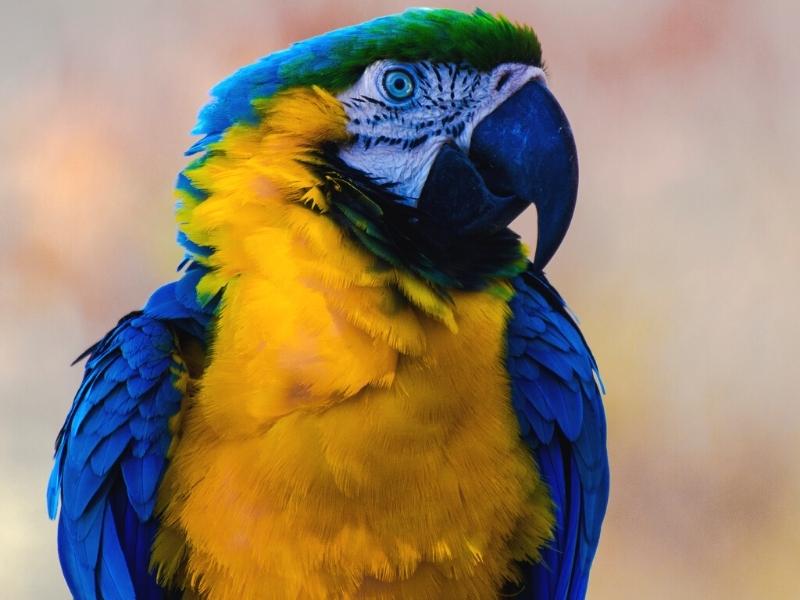
The blue and yellow macaw are one of the most vibrant, colorful birds. They are known for their ability to pick up human speech and imitate it. They have rich aqua blue feathers all over their body except the face and head which has lime color. Their front is mostly deep yellow or light orange while their feathers are blue and yellow. They have black-colored beak, talons, and blackish gray-colored feet. Their beak is powerful enough to break nutshells. Their majestic and colorful tail feathers give them a royal look.
The blue and yellow macaws are the cutest looking birds in the world. They have a wingspan of 4 ft and a body length of 3 ft, which makes them look majestic and beautiful. Their appearance is enhanced significantly because of their tail feathers.
Macaws are extremely messy eaters with strong beaks who eat a range of food products. The blue and yellow macaw eats seeds, nuts, and fruits. They like eating seasonal fruits and vegetables. They eat clay to neutralize the toxins they have ingested while eating some fruits and vegetables that are not suitable for them.
The blue and yellow macaw mate for life as they develop sexual maturity soon as they reach two to three years. They make a nest out of dead palms, mostly using mauritia flexuosa palms. The female lays two or three eggs and incubates the eggs for about 28 days. Out of the two or three chicks, one is the dominant one that gets most of the food, and the others perish in the net. Chicks develop wings 97 days after their birth. The chick leaves the parents’ side after almost a year.
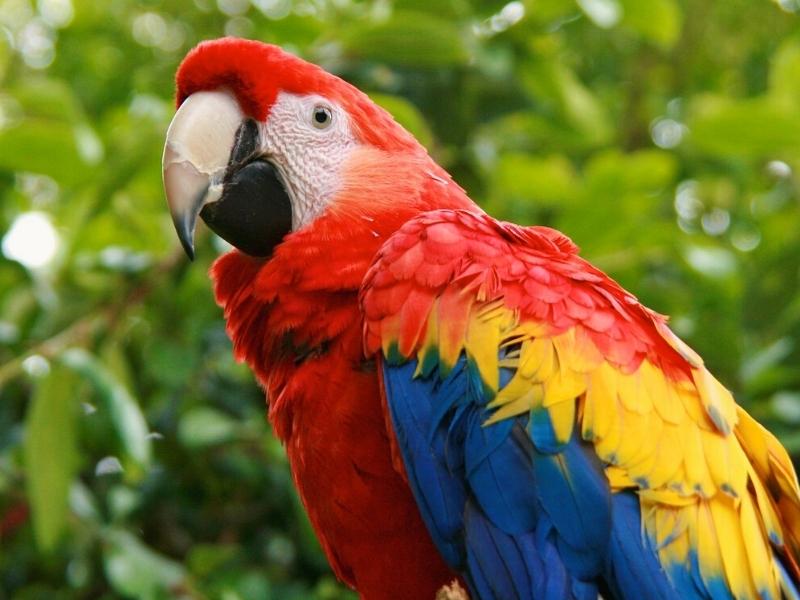
The scarlet macaw (Ara macao) is one of the symbols of the Peruvian Amazon. Its brilliant colors have captivated people all over the world through the iconic images of the birds feeding on collpas (clay licks). Macaws in general, aside from being visually impressive, are important components of jungle life. They disperse seeds which help the regeneration of trees. Additionally, they are tightly linked with the aguaje (Mauritia flexuosa), a large palm tree that serves as its natural nesting place.
There are various theories as to why macaws eat clay. One of them is that they need sodium and other minerals found in the clay. Another is that macaws enjoy socializing at the claylick every morning. One of the macaw’s strongest competitors for the use of trees as nests is the Africanized bee.
For some researchers, the macaw’s presence is an indicator of forest quality, since the macaw needs certain tree species to nest in that are characteristic of primary forests. Although one pair can lay between 1-4 eggs per year, rarely do more than 2 chicks survive. Additionally, because the chicks hatch at different times, the older chick has a higher probability of surviving than the younger chick.
Macaws are monogamous, and normally have only one mate.Censuses show that each year, less than 20% of the Scarlet Macaw population reproduces, making it very vulnerable to threats.
On some occasions, the Scarlet Macaw hybridizes with other macaw species creating rare morphologies like bright orange plumage. Its beak is hooked and strong, which allows it to break open hard-shelled seeds, excavate in clay, and defend itself against predators. When the macaw is stressed out, like other parrots, it will rip its own feathers out.
All macaws are left-footed. They use their left foot to manipulate food while they support themselves with their right foot.
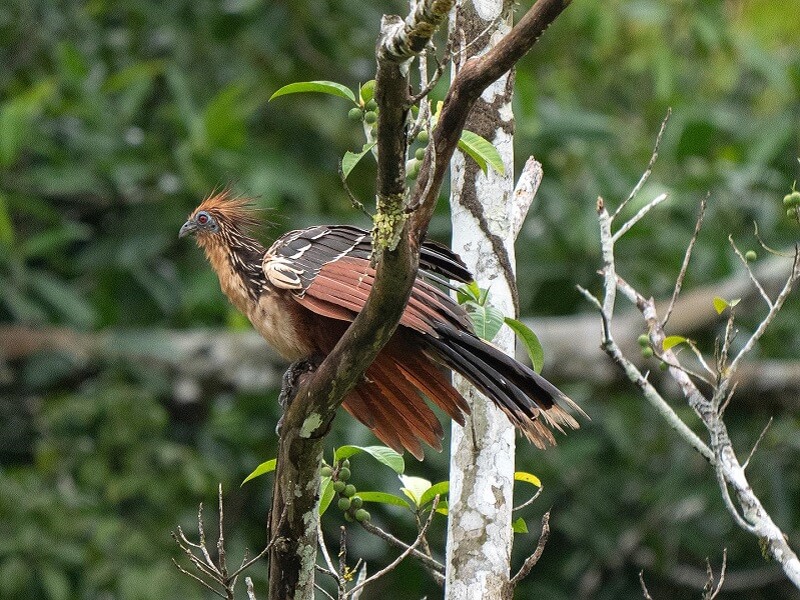
Is a primitive chicken-sized bird of South American swamps, principally in the Amazon river basins. The young possess two large claws on each wing, a trait that has led some scientists to link the species with the fossil Archaeopteryx of the dinosaur era. The hoatzin is the only bird with a digestive system that ferments vegetation as a cow does, which enables it to eat leaves and buds exclusively. Hoatzins feed on swamp plants, grinding foliage in a greatly enlarged crop (not the gizzard, as in other birds). Adults can fly clumsily for short distances, but they spend most of their time perched, digesting their leafy food. A large rubbery callus on the bird’s breastbone acts as a tripod to keep it from falling over when its stomach is distended.
Adult Hoatzins are approximately 24 to 26 inches in length. They have blue skin covering their faces and their eyes are red. The outer feathers are primarily chestnut-brown and the long tail is bronze-green and ends in a white band. The heads of Hoatzins are topped with a crest of reddish-brown feathers. The young are born without feathers but develop a layer of black down shortly after birth. A distinguishing feature of young Hoatzins are the pair of functional wing claws which are found on the ends of their wings on the first and second fingers. This feature is lost when the bird matures into an adult.
Hoatzins build their nests on branches over the water about 6 to 15 feet above the surface. They normally lay two to three eggs and the incubation period lasts thirty-two days. Both male and female brood the young, which typically remain in the nest for two to three weeks after they hatch.
Hoatzins are very territorial, especially during the breeding season. Hoatzins seek a territory near water over which they can build their nests. Ideal locations can be scarce, so when a breeding pair establishes their territory, both the male and female actively defend it. When predators approach, young Hoatzins can use their wing claws to climb on the limbs of trees and out of the predator’s reach. If escape is not possible in the trees, the young birds will drop into the water below the nest and swim beneath the surface until they reach safety.
Hoatzins are primarily folivores. Although they typically feed on less than twelve species of plants, they are capable of eating the leaves of more than fifty different species. The leaves of tropical legume plants are an example of a leaf that Hoatzins commonly feed on. Other foods that are sometimes included in the diet of Hoatzins include some flowers and fruits. They have an enlarged crop in which symbiotic bacteria are stored and used to break down the cell walls of the leaves, allowing for them to be digested stomachs.

Jabiru birds have mostly white plumage, with a silver tuft of hair that is present on top of their head. The head and upper neck are featherless and have a black tinge. They also have a featherless red pouch that is located right at the base of their neck. Both the sexes have black feet. The beak or bill in jabirus is quite large and slightly upturned. This bill is black and broad in nature. The male birds appear quite a bit larger than the female. The wingspan is quite impressive and has an average measurement of 8.5 ft (2.6 m).
Jabiru storks generally display monogamous behavior during breeding. The breeding season lasts from December to May. Both the birds engage in building their nest. These nests are built a little away from the jabiru groups near them. The nests are always built above ground in tall trees. These birds flap their wings during courtship. In this species, the females are known to approach the males. However, they most often get rejected by the male bird, but if courting and subsequent breeding are successful, the female lays up to five eggs in their nests. The eggs are incubated by both the parents. Once the eggs hatch, both parents are also involved in taking care of the young.
Jabirus are not very vocal in nature. However, their modes of communication include vocal as well as visual mediums. These birds are known to have a display to greet each other. They also have a band of skin that is located towards the lower part of their neck. This band or throat sac turns red when the bird is excited and hence acts as a communication tool.
Jabirus are carnivorous storks and eat a variety of animals. They feed on fish, insects, amphibians, reptiles, mammals, and can even eat mollusks. They use their slightly upturned bill or beak to catch their prey using tactile sensations. They also consume dead fish at times.

Found in Central and South America as well as Trinidad & Tobago, this beautiful bird of prey inhabits subtropical or tropical moist lowland forests and subtropical or tropical swamps.
It can be identified by a white head tinged with buff, with black shaft streaks on the crown; a bright cinnamon-rufous body that grows paler on the chest, with a black crescent on the upper breast; a back with black shaft stripes; and black tail feathers barred with rufous. You’ll often see them swooping down to feed on fish, small lizards, insects and rodents.
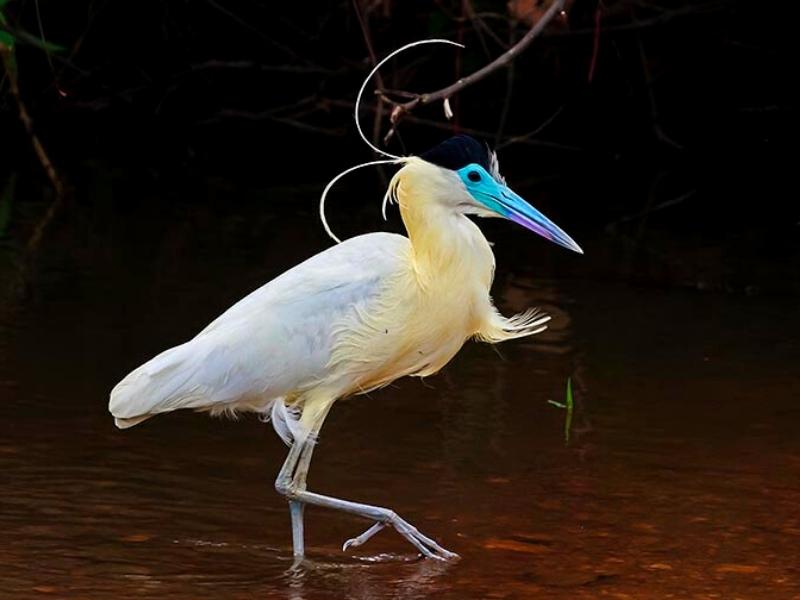
This colorful bird is found in many parts of Central America and South America, typically around rivers, swamps and freshwater lakes.
The Capped Heron is noteworthy for the brilliant blue and pink colors on its beak, bright yellow feathers on its neck and underbelly, and long, skinny plumes coming off its head, which make it look a little like a refined distant cousin to Africa’s famed Secretary Bird.
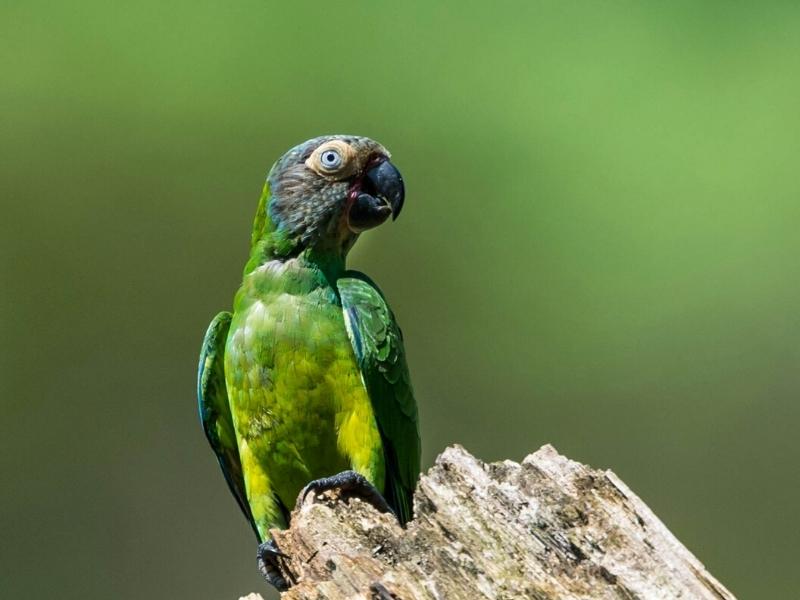
A common sighting in both the Amazon and domestic bird cages, this verdant green, blue and grey neotropical parrot is also known as the Weddell’s conure or dusky-headed conure. They prefer semi-open wooded habitats in the Western Amazon, but are also often seen in coffee plantations and in colonies around the Lima coast. Social, energetic and entertaining, they tend to be found in pairs or small groups, feeding on fruit, seeds, flowers and insects.
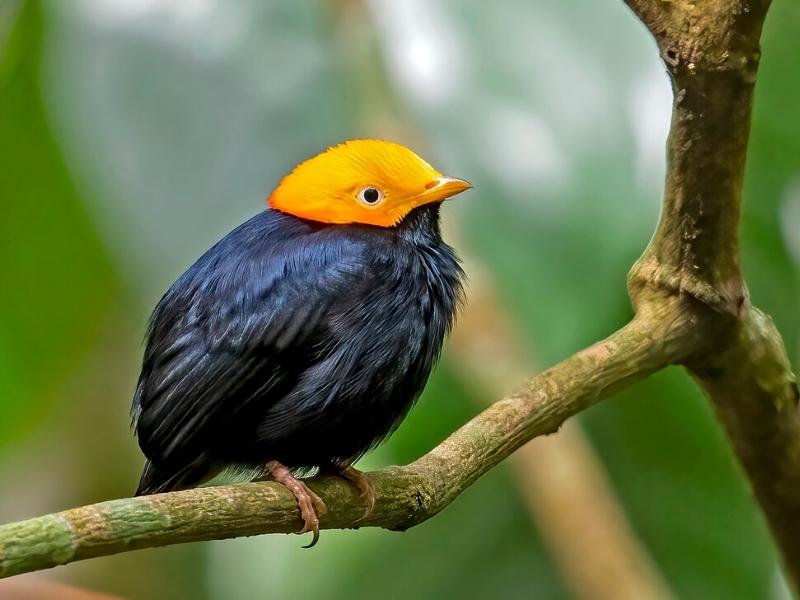
One of around 60 species of manakins found in the American tropics, the Golden-Headed Manakin is a colorful cutie typically measuring about 3.7 inches long and weighing less than half an ounce.
Females and juveniles look similar to female White-Bearded Manakins, but adult males are black-bodied with a golden cap, white and red thighs, pink legs and yellow bill. Commonly found in low elevation forests and plantations, their jumping, sliding mating ritual and buzzing zit-zit call are a wonder to behold.
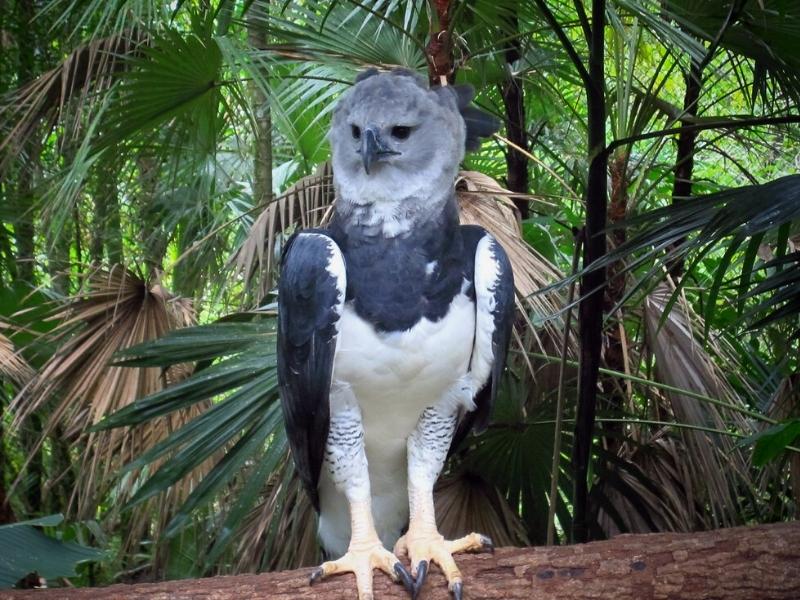
Also known as the American Harpy Eagle to distinguish it from a similar species found in Papua New Guinea, this fearsome bird of prey is the largest and most powerful raptor in the Amazon rainforest.
Females are bigger than males, weighing up to 22 pounds and measuring up to 40 inches long, with a wingspan of six to seven feet. They’ve got pale grey, double-crested heads; broad black breast bands; white bellies; slate black uppers; and black tails with three grey bands on top and three white bands below.
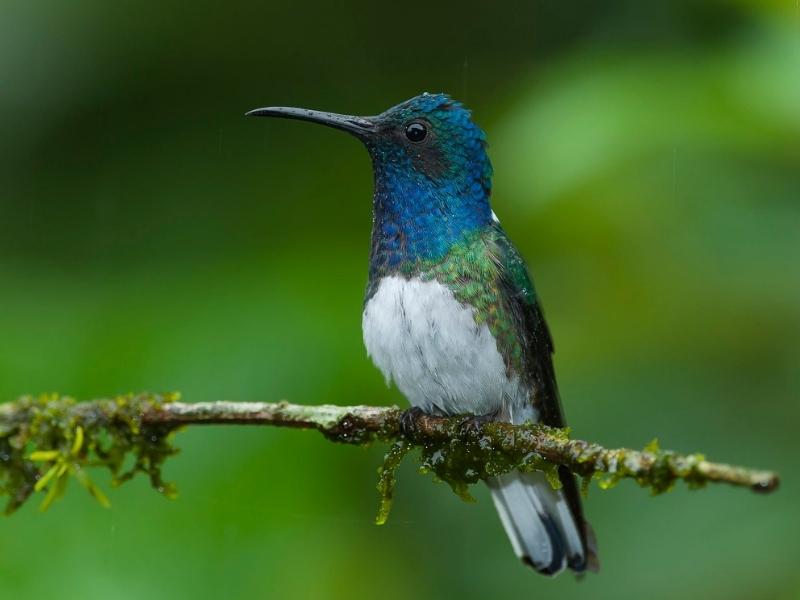
If you love hummingbirds, the Peruvian Amazon offers more than a dozen dazzling species that are virtually guaranteed to delight. Their gem-like colors encompass virtually every color of the rainbow. Highlights include the blue crown and fuchsia neck of the Long-billed Starthroat, the vivid green of the aptly-named Glittering-throated Emerald, the striking royal purple breast of the Fork-tailed Woodnymph, and the shimmering aqua shades of the Blue-chinned Sapphire.

There are four vulture species found in the Peruvian Amazon, but this colorful character deserves the crown for most beautiful. With a range that covers much of Central and South America. They’re large and predominately white, with grey to black tail feathers, an orange fleshy caruncle on the beak, and a colorful bald head that may include blue, orange, purple, red, and yellow.
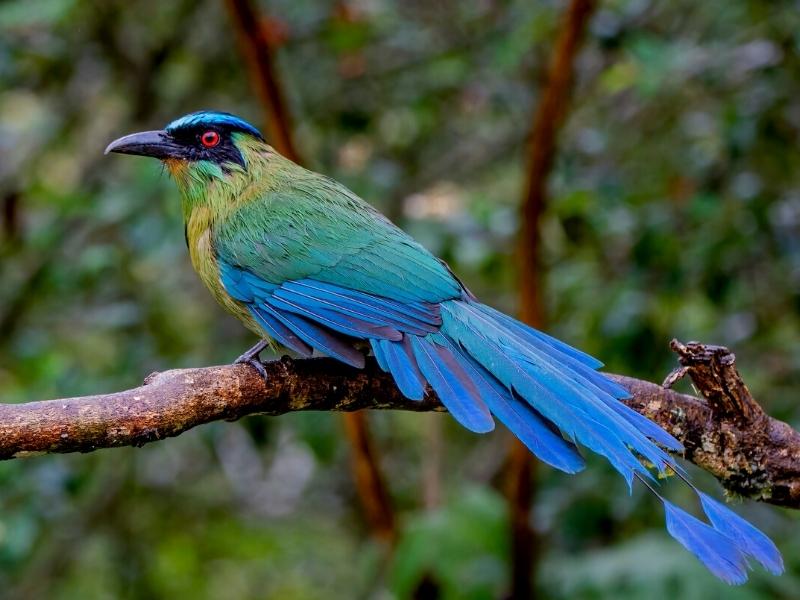
Passerine birds related to Kingfishers and Bee-Eaters, these neotropical forest-dwellers. These Amazon Birds are known for their colorful plumage, large bills and long tails (some with a racket-like tip) that they use for wagging at predators and, in the case of males, attracting mates.
Living in colonies of up to 40 paired individuals, Motmots typically nest in riverbank tunnels, and feed on everything from fruit and insects to frogs, lizards and other small prey.
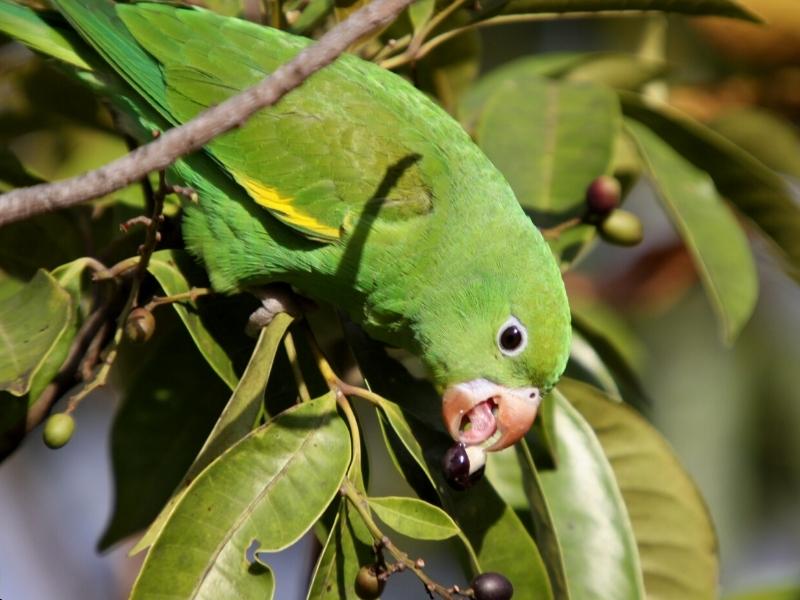
Of all the Amazon bird species you might see during a small ship river cruise, few elicit more excitement than the dozens of colorful parakeet and parrot species. Parakeets (whose name is derived from perroquet, the French word for parrot) are generally smaller and tend to breed in groups, but the words parrot and parakeet are often used interchangeably.
Amazon parakeet species include the grey face of the Dusky-headed Parakeet, the striking reds of the Maroon-tailed Parakeet, and the brilliant blues of the Cobalt-winged Parakeet. As far as Amazon parrots go, they come Black-headed, Blue-headed, Blue-winged, Orange-cheeked, Orange-winged, White-bellied, and Yellow-crowned.
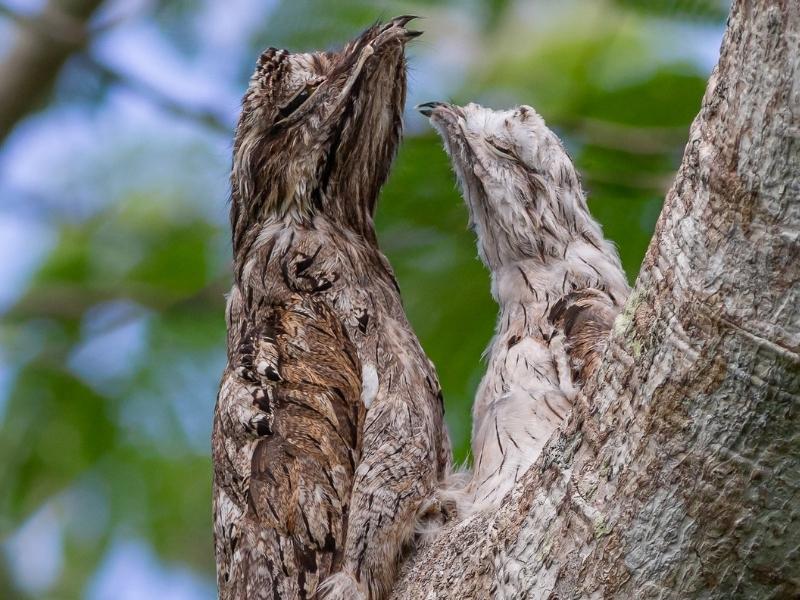
There are two species of potoos– the Common Potoo and the Great Potoo– found in the Peruvian Amazon. But you’ll likely need an eagle-eyed naturalist guide armed with binoculars if you want to find them.
That’s because these owl-like birds (which are actually closely related to nightjars and frogmouths) are masters of camouflage. Their disproportionally large heads and mottled brown and grey feathers allow them to spend the day perched on stumps or branches, with eyes half-closed, virtually unnoticeable with the naked eye. At night, they use their huge eyes and massive mouths to feed, mostly on flying insects.
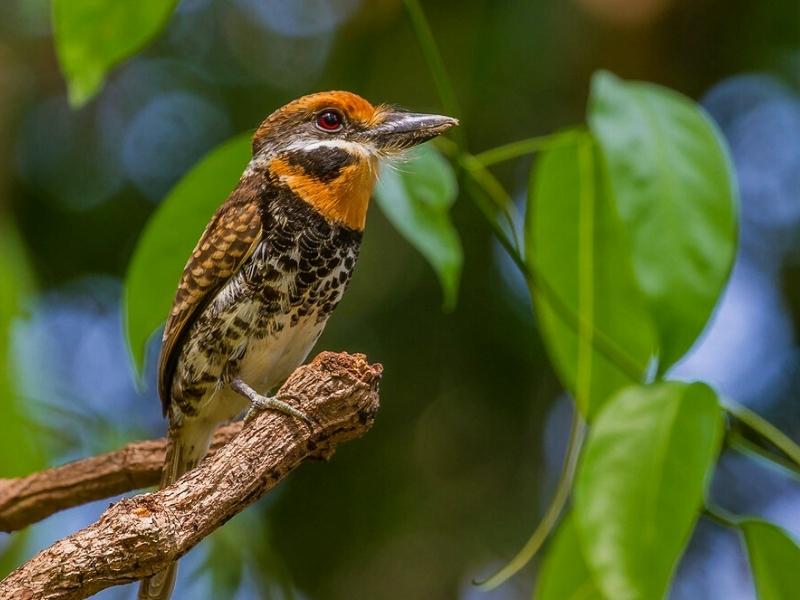
Shy and secretive by nature, these tropical tree-dwelling insectivores can be found from Mexico down through South America. But, with their preference for forested habitats, their greatest species diversity can be found in the Amazon Basin. They may lack the iridescent colors of their cousins, the Jacamars, but the Puffbirds’ loose plumage, short tails, and brightly-colored bills and eyes give them undeniable appeal.
They rarely vocalize, preferring to sit still and quiet while waiting for insects on which to prey, but you might hear their repeated, high-pitched whistles at dawn and dusk.
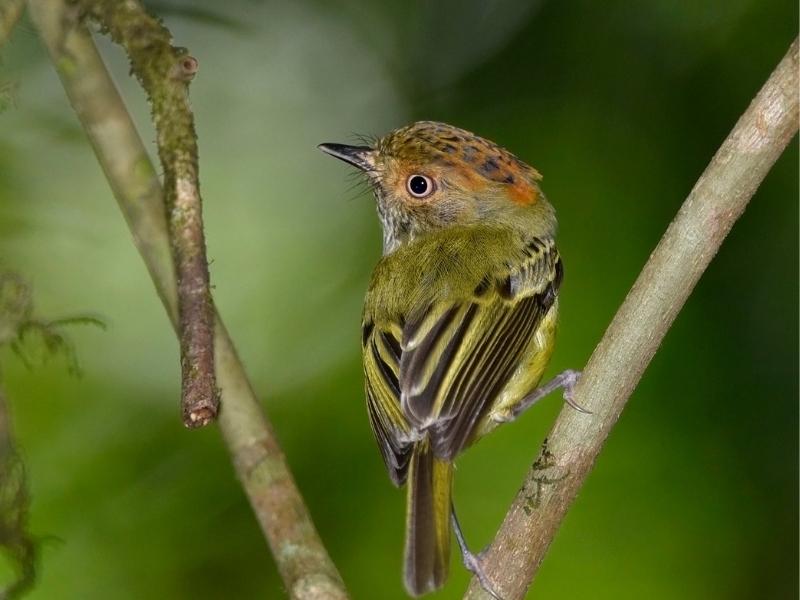
The mascot of the Mongabay environmental science website, this adorable bird is found in tropical forests in Central America and the northern part of South America. They’re tiny and difficult to see in the wild, as they prefer searching for food in the darker part of the forest.
But they’re beautiful birds, named for the crest of feathers that are usually only displayed when they’re attracting mates or trying to make themselves look bigger due to a threat.

When it comes to the most colorful birds of the Peruvian Amazon, the trogons give the toucans and parrots/parakeets a run for their money. There’s the Blue-crowned Trogon, whose blue-black head and red breast and eye-ring are offset by a black and white barred tail.
There’s the Green-backed (a.k.a. Amazonian White-tailed) Trogon, who boasts a dark blue head, yellow-orange belly, and beautifully vermiculated tail. But our favorite is the Pavonine Quetzal, which is also known as the Peacock Trogon or the Red-billed Train Bearer.
It’s identified by its metallic green uppers, red belly and bill, and long tails with black feathers underneath.
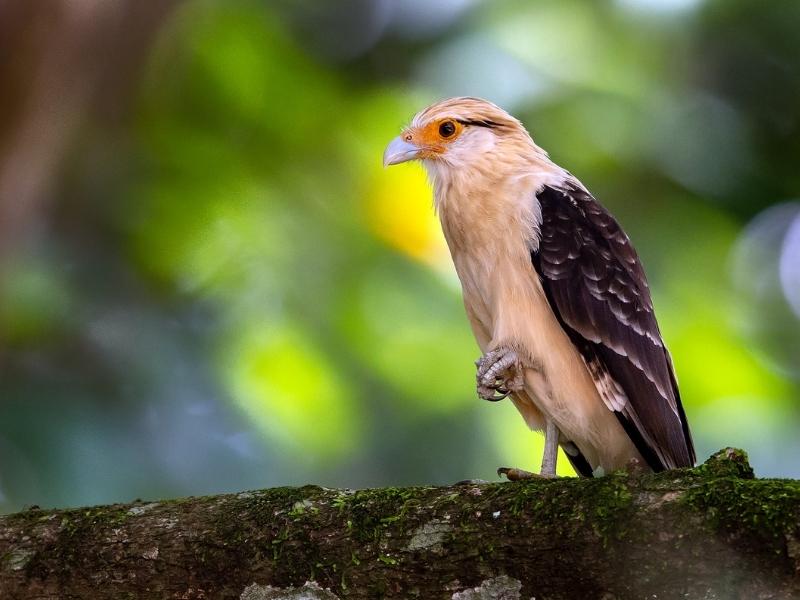
Part of the falcon family, this beautiful bird of prey is fairly common throughout tropical and subtropical South America and southern Central America. Measuring 16-18 inches, they have yellowish-brown heads and underparts, black eye streaks, with brown backs and wings mottled with pale patches and a barred tail of brown and cream.
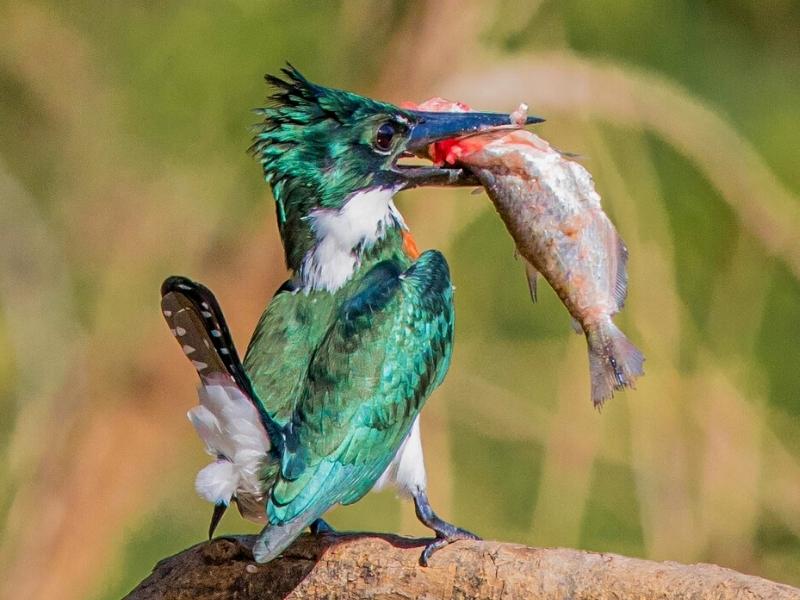
The Amazon kingfisher is a mid-sized bird of tropical lowlands, mostly found in the tropics from southern Mexico through northern Argentina. They are seen around riverine areas like the edges of a lake or pond. Their body is decorated with dark blue or green feathers, with a shaggy crest, and a whitish collar located in their neck region.
They feed on insects and amphibians (like small reptiles and crustaceans). Amazon Kingfisher is a special jungle bird, gifted with a fantastic vision that can create clear distinctions among colors. Their long, dagger-like pointed bill is made for seizing and impaling its prey. At the same time, their sturdy feet provide support and stability as they perch on tree branches or wires.

Green oropendola is a jungle bird that belongs to the Icteridae family. They fare better in a wooded environment and are mostly found in the Amazon basin of South America. Insects, fruits, and nectar are their diet. They grow bright olive-yellow feathers and chestnut (brown) in the posterior underparts and rump. Their bill is pale with an orange tip; they are also known as vocal birds and can create a wide range of songs.
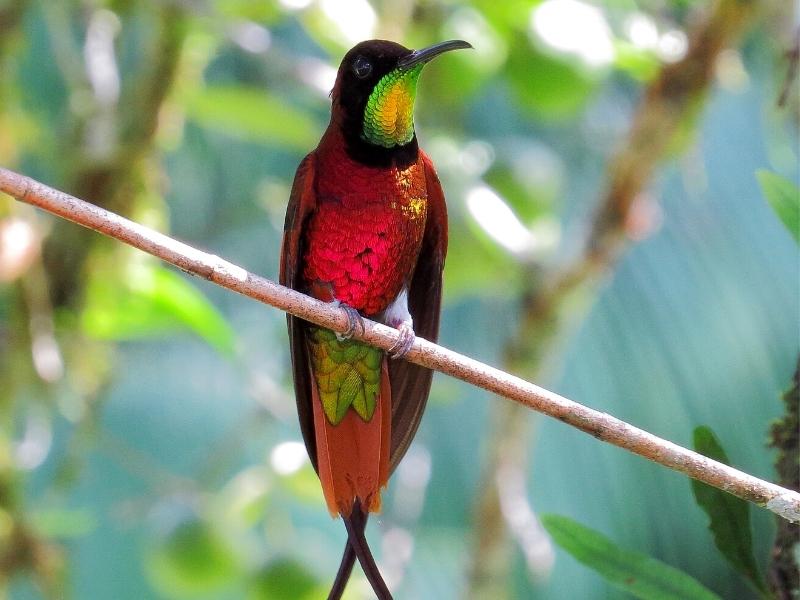
This charming hummingbird is one of the birds of the Amazon with stunning rich feathers, a glittering green throat, and scythe-like tail streamers. They belong to the non-migratory bird group, are categorized under the Trochilidés family, and resides in South America (Brazil, precisely). They are famous for being the largest hummingbird in Brazil and second to the Giant Hummingbird in size. They can feed on insects but are mostly caught foraging around low lands and picking flower nectars (nectars of flowers are their main diet).

The plum-throated cotinga is one of the birds in Brazil, belonging to the Cotingidae family. They are also located in Bolivia, Colombia, Peru, and Ecuador. The male has a turquoise blue color (without markings), a purple throat, and a slight yellow iris. The female has a dusky brown look and faint scalloping.
They survive by fruits and dwell mostly in past forests that were significantly degraded or in subtropical or tropical moist lowland forests. They are known for echoing a soft and mournful “hoooo.” And can lie horizontally, shaking its feathers and spreading its tail.
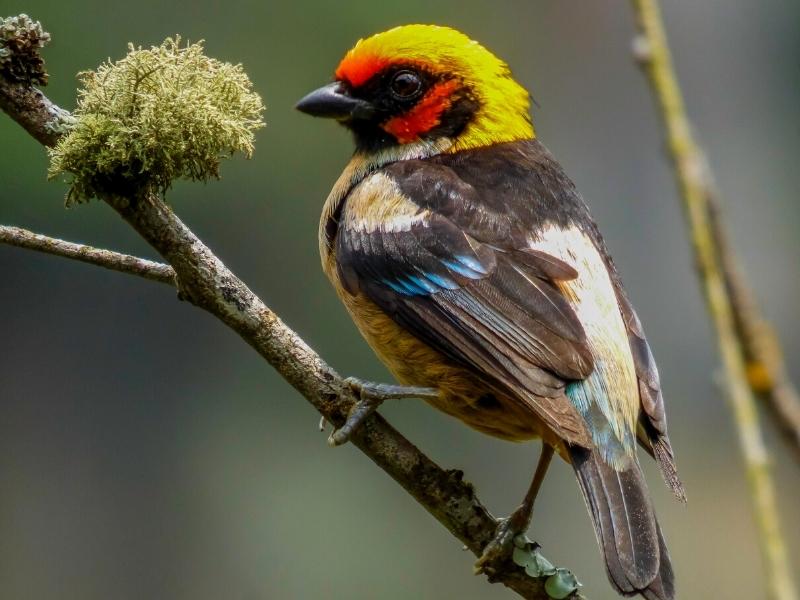
Small, unmistakable tanager with a bright red-orange face that fades to yellow on the crown and nape. Also note black ear patch, black back, opalescent greenish underparts and shoulder patch, and rufous rump. Birds on the east slope are bright red on the face, while those on the west slope are more orange. It occurs from approximately 1,200 to 2,500 m, within the forest or on the edges or clearings. Found in pairs or small groups within mixed-species flocks, usually in the canopy. Visit fruit feeders.

Large chicken-like bird, but smaller than guans and curassows. Uniformly brown with scaly head and neck, and bare red skin on throat that can be difficult to see. It is most commonly found on forest edges, including along rivers, and around agricultural areas. Loud, raucous calls are often heard at dawn and dusk, when calls from one individual often start a chorus of calls from other chachalacas in the area.

Like a miniature version of the more common Squirrel Cuckoo, it is primarily rufous with a yellow bill, red eye, and gray belly. Much smaller and relatively shorter tailed than Squirrel Cuckoo. Uncommon but widely distributed in lowlands and foothills, preferring dense understory at forest edges, often near water. Usually elusive and difficult to see. I heard the “ink!” nasal and an ascending rattle.

This tiny forest sprite is found at mid-elevations in the Andean cloud forest, between about 1,000–2,200 m. The male is one of the most distinctive hummingbirds with its long racket-shaped tail and prominent white or orange socks. Females can be identified by their white underparts with varying amounts of spots, short straight bill, stockings, and diminutive size. Watch out for female whitetips, which have very similar plumage, but are larger, have long bills, and don’t have socks. Can be seen foraging in low to mid-levels of forest and edges. Visit feeders.

Brightly colored bearded man from montane forest. Males are green with a yellow breast, a red belly band, and a red head; the color of the mustache can be blue or yellow depending on the subspecies. The females have a blue face and a greener body. Both sexes have a pale greenish-yellow bill. Often found singly or in pairs with mixed-species flocks, foraging in the middle and canopy of moist forest. Listen for a musical purr with an accented introductory note: “PA-prrrrr.”
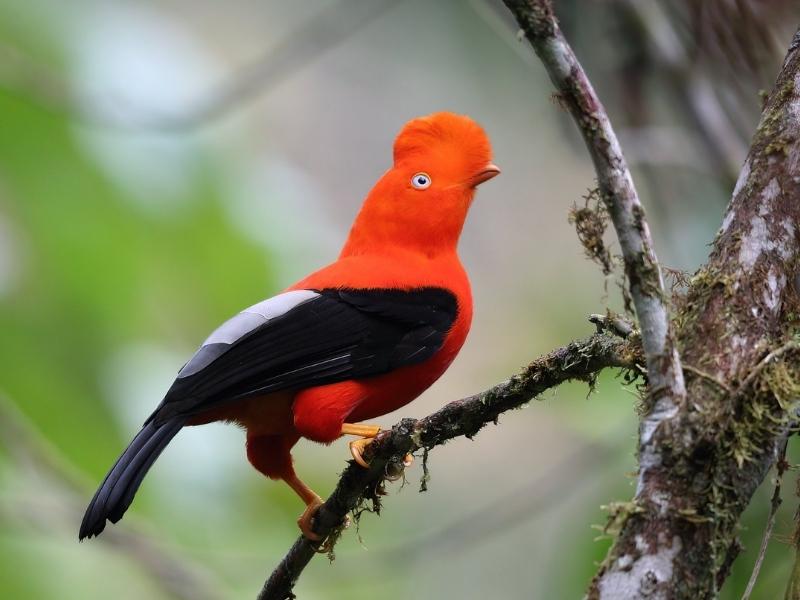
One of the iconic birds of the Andes. Quite large, significantly larger and stockier than a thrush. Found in cloud forest at mid-elevations, most often at dawn at a display site, where males screech like pigs, and jump and dance for females. Sometimes seen in other parts of the forest, especially on fruiting trees. Males can be bright crimson or orange, always with black wings, broad silvery tertials, orange legs, and swollen rounded crest. The female is brown with a smaller crest; she notes the penetrating pale eye. Nests on large rocks or cliff walls. The only similar species is Guianan Cock-of-the-rock, but there is no range overlap.
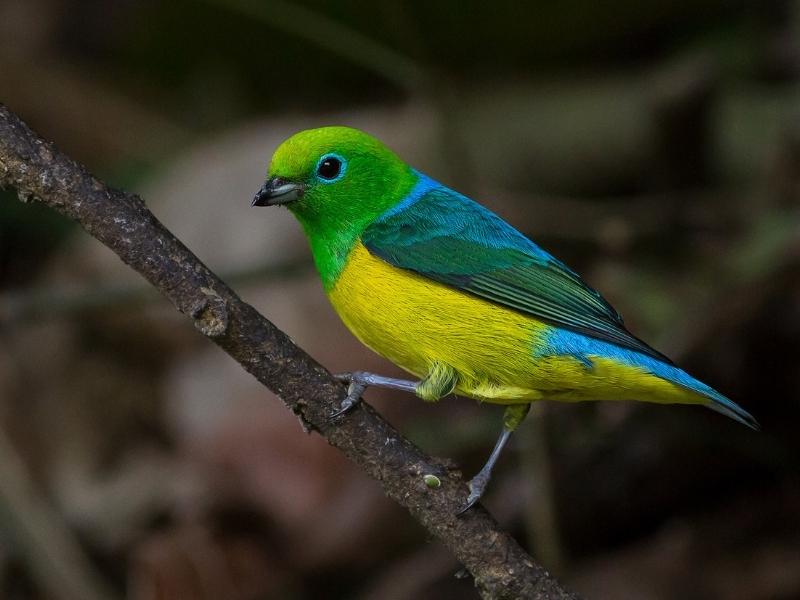
Small, stocky bird with a thick bill. Male is mostly lime green with a yellow belly, and also has a thin blue collar and blue rump; in some populations they are entirely blue above. The female is similar but duller, with a greener belly. Usually seen in pairs or small flocks, often in association with a fruiting tree. Forages at all levels, but most often in canopy. Listen for its melodious whistles, usually in one or two notes.

Spectacular bird of the Amazon region and adjacent Andean slopes. It looks like a huge raven with a bushy crest, a thick braid hanging from its throat, and pale eyes. The male is larger than the female, with a longer caruncle (covered with feathers) and a white patch on the front of its crest. The flight is undulating, similar to that of a woodpecker. Inhabits tall rain forest, often along rivers. Males gather at display sites where they spread their wattles and emit low-pitched moos.
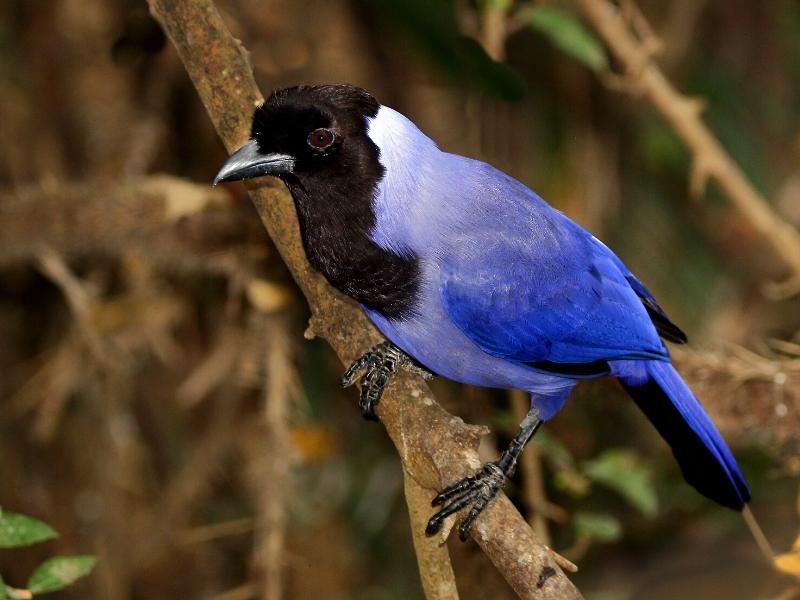
Large, dark bird with vibrant blue plumage and a black head and bib. Frequents a variety of open habitats, including forest edges, gardens, and agricultural areas. It is often particularly common in vegetation along rivers and waterways. Distinguished from the similar Purplish Jay by its bright blue plumage and contrasting pale nape. Also listen for a piercing, high-pitched “jiir”

Colorful tanager found in cloud forest along the eastern slope of the Andes. Male is bright green with a bluish tinge to head and underparts, dark throat, and orange neck and rump patch. In southern Peru and Bolivia, male also has broad sapphire stripe on underparts. Females and immatures are duller with smaller orange neck patches, and little or no blue on underparts. Usually found following mixed-species flocks in the canopy.
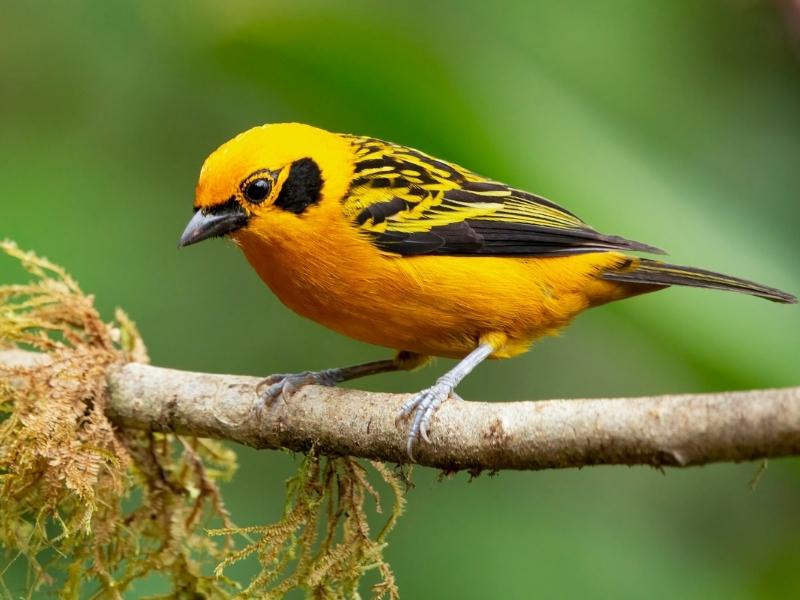
Small tanager found in the Andean foothills and subtropical zone from Venezuela to Bolivia. Mostly bright golden yellow with a black ear patch, striped back, and mostly black wings and tail. There is some variation between populations, birds further north have chest band and chestnut flanks. equal sexes; juveniles are duller yellow. One of the most common tanagers in mixed flocks between 900–2,200 m, in cloud forest, edges, and gardens.
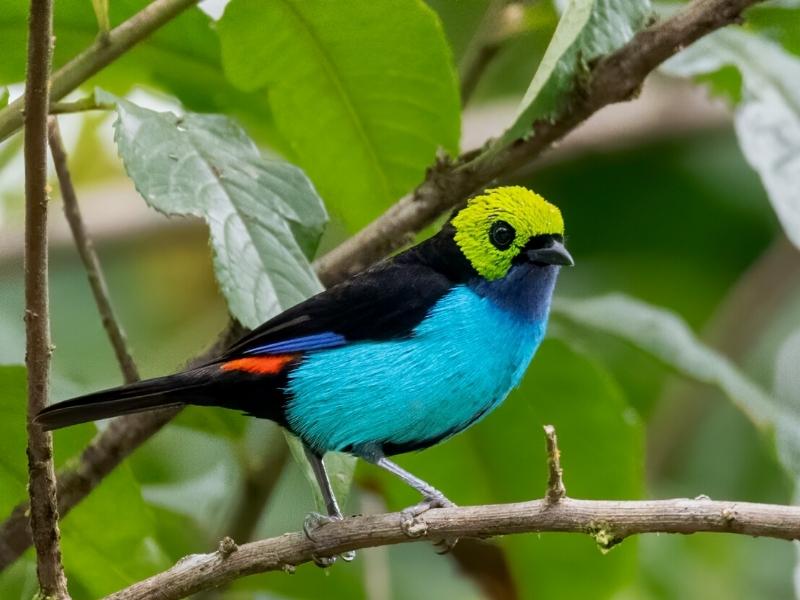
Small, amazingly colored tanager from lowland Amazonia. The bright green head contrasts with the red, blue and black body. Equal sexes. Often quite common within its range. Found in moist forest canopy, often in mixed-species flocks. Likes to stay high in canopy, but occasionally moves lower to middle, darting between perches as it forages.

Dive deep into the culture and landscapes of Peru with this adventure to Machu Picchu, the Amazon and more. Search for wildlife along jungle trails and rivers in the rainforest from a comfortable lodge then head up into the Andes to Cusco, the capital of the Inca empire.


Your luxury trip to Peru includes a selection of Andean and Amazonian landscapes. We will help you to explore this welcoming and varied country, planning each step of your trip, with the best services. With the help of amazing expert guides, you can enjoy all that Peru has to offer, every detail is well taken care of.


Peru is a country with different cultures and beautiful landscapes. It has one of the best gastronomy in the world. This tour is designed for travelers looking for unique and special moments in their vacations, and families who want to avoid crowds. You will visit the ancient city of Lima, the Amazon forest, the beautiful sacred valley of the Incas, the wonder of Machu Picchu.

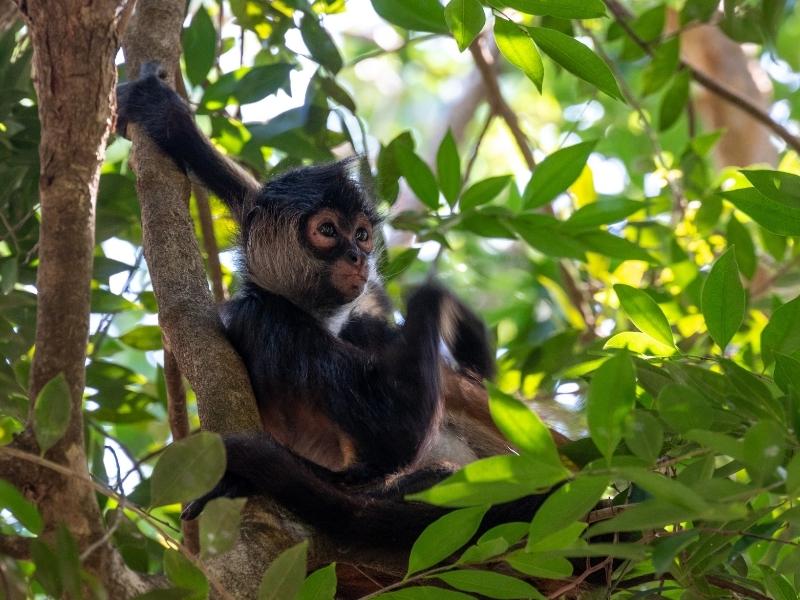
Manu National Park is an excellent way to experience an intense amazon wildlife.Is the biggest Amazon rainforest in the Americas, its incomparable natural wealth, host the greatest amount of flora and fauna of the world.


Manu National Park is located in the Amazon rainforest of Peru. This attraction is one of the few places on the planet that still maintains its great biodiversity of birds, mammals, reptiles and many medicinal plants.

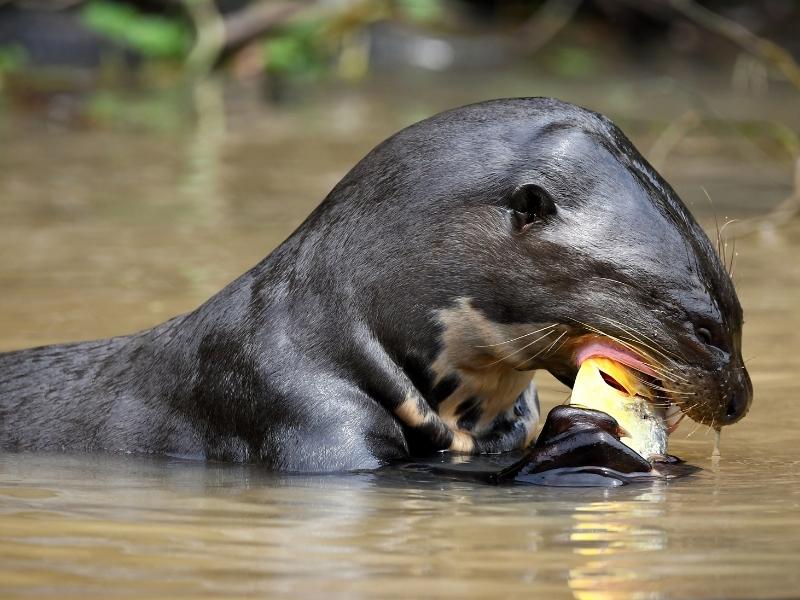
Discover the majestic Amazon rainforest of the Manu National Park. This protected area is in Peru, it is one of the largest ecosystems on the planet, due to its great diversity of birds, insects, plants and mammals.
